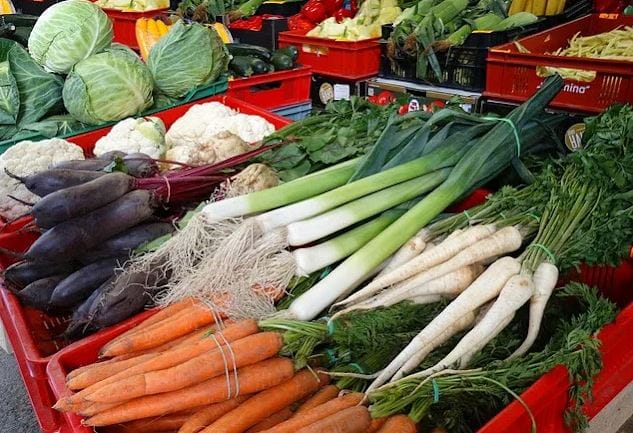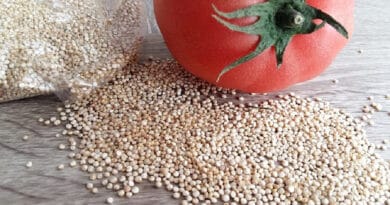CLASSIFICATION OF VEGETABLES
Classification of Vegetables: Crucial for reasons, including efficient post-harvest processing and efficient crop management.
Across the world, more than 10,000 species of plants are grown as vegetables; approximately 50 plant species are used for commercial vegetable cultivation. It is therefore important to classify them into different groups to understand the relationship of cultural requirements and to ease the understanding of their adaptability under agro-climatic conditions. Hence, the vegetable crops are classified under groups, like ;
- Classification of vegetables based on the season
- Classification of vegetables based on parts used as food:
- Classification of vegetables based on the method of cultivation
- Classification of vegetables based on hardiness
- Classification of vegetable crops according to soil reaction
- Classification of vegetables based on salt tolerance
- Classification of vegetables according to the cultural method
- Botanical Classification
A) Classification of vegetables based on season:
According to general temperature requirements, vegetable crops can be grouped as follows:
(i) Rabi Season (Duration: Mid. October to Mid. March):
Potato, Cabbage, Cauliflower, Knolkhol. Tomato, Brinjal (Winter), Radish, Beet, Carrot, Turnip, Spinach. Bottle gourd (Winter). Pea, Onion, lettuce, etc.
(ii) Kharif Season (Duration: Mid. June to Mid. October):
Brinjal (Rainy). Chilli, Gourd, Pumpkin. Cucumber, Pointed gourd, Snake gourd, Bitter gourd, Ridge gourd, Bottle gourd (Rainy), Sponge gourd, Lady’s finger etc.
(iii) Zaid Season (Duration: Mid. March to Mid. June):
Brinjal (Summer), Lady’s finger, Bitter gourd (small). Watermelon, Muskmelon, Bottle gourd (Summer), Pumpkin (Summer), etc.
B) Classification of vegetables based on parts used as food:
In this classification, vegetables are grouped according to the parts eaten. Viz.
(1) Root vegetables:
Radish, Carrot, Beet, Turnip, Sweet potato, etc.
(ii) Stem vegetables:
Potato, Onion, Garlic, Arum, Artichoke, Yam, Turmeric, Asparagus, etc.
(iii) Leafy Vegetables:
Cabbage, Chinese Cabbage, Brussels Sprouts, Lettuce, Leek, Methi (Fenugreek), Spinach, Poi, Bathua, Coriander, etc.
(iv) Flower:
Cauliflower, Sprouting broccoli, Roselle, Globe-artichoke, etc.
(v) Fruit vegetables:
(a) Mature Fruit: Tomato, Watermelon, muskmelon, Pumpkin, etc.
(b) Immature Fruit: Brinjal, Lady’s finger, Cucumber, Pea, Guar Sem, Broad bean, Pointed gourd, Summer Squash, Snake gourd, Bottle gourd etc.
C) Classification of vegetables based on the method of cultivation:
In principles of vegetable growing, this classification has been found more satisfactory than others. It is based on essential methods of culture, and in this system, all vegetable crops having a requirement are grouped. Such as:
Group 1. Perennial Vegetable Crops
Asparagus, Artichoke, Jerusalem, Seakale, Rhubarb, etc.
Group 2. Pot Herbs or Green Vegetables
Spinach, New Zealand spinach. Mustard, Amaranthus, etc.
Group 3. Salad Crops
Lettuce, Celery, Parsley, Cress, Endive, etc.
Group 4. Cole Crops
Cabbage, Cauliflower, Brussels Sprouts, Broccoli,
Chinese Cabbage, Knolkhol, etc.
Group 5. Root Crops
Radish, Carrot, Beet, turnips, horseradish,
Sweet potato, etc.
Group 6. Tuber Crops
Potato, yam, etc.
Group 7. Bulb Crops
Onion, garlic, Leek, Shallot etc.
Group 8. Peas and Beans
Pea, Bean, Cowpea, Broad beans, Common common beans, Garden
bean, Soyabean, Limabean, etc.
Group 9. Solanaceous fruit vegetables
Brinjal (Egg Plant), Tomato, Chilli (pepper) etc. Group
Group 10. Cucurbitaceous Vegetables
Pumpkin, Gourds, Squash, Cucumbers, Pointed gourd, Watermelon, muskmelon, Bottle gourd, Spong gourd, Ridge gourd, etc.
Group 11. Malvaceous Fruit Crop
Lady’s finger (Bhendi or Okra), etc.
D) Classification of vegetables based on hardiness
Vegetable crops are often classified as hardy and tender. The hardy vegetables may tolerate ordinary frost without injury, while the tender ones would be killed. This implies that frost injury is the main difference between hardy and tender vegetables; some hardy plants will not thrive well under hot, dry conditions. while Others withstand frost and thrive during the hot weather of summer. Some tender vegetable crops do not thrive in cool weather; cool-season and warm-season crops are used to suggest the condition under which the crop grows best, rather than their susceptibility to frost injury.
Based on the temperature that the plant will withstand, the vegetable crops are grouped as:
(i) Hardy.
It may be safely planted before the last killing frost in the spring. e.g. Radish, Turnips, Onions, Garlic, Leek, Cabbage, Knolkhol, Broccoli, Brussels sprouts, Asparagus, Peas, Rhubarb etc.
(ii) Semi-hardy.
It will not stand a hard frost but will grow in cool weather and is not injured or even killed by a light frost, e.g. Carrot, Beet, Palak, Lettuce, Cauliflower, Potato, Celery, Globe artichoke, parsnip, etc.
(iii) Tender.
It is injured or even killed by light frost, but it can withstand cool weather and soil. e.g., Brinjal, Tomato, Lady’s finger (Bhindi), Capsicum, Cowpea, Cucurbits, Sweet potato, Yams, Tapioca, Amaranthus, Cluster beans, Colocasia, Snap beans. etc.
(iv) Very tender.
It is injured by cool weather. This system of classification of vegetables may be useful for farmers and seedsmen to program their planting schedules.
E) Classification of vegetable crops according to soil reaction
(i) Slightly tolerant to acid soil (pH 6.8 to 6.0)
Asparagus, Beet, Broccoli. Cabbage, Cauliflower, Chinese Cabbage, Celery, Lettuce, Lady’s finger, Leek, Muskmelon, New Zealand spinach, Onion, Palak, Spinach, etc.
(ii) Moderately tolerant to acid soil (pH 6.8 to 5.5)
Brinjal, Bean, Brussels Sprout, Carrot, Cucumber, Garlic, Horseradish, Kholrabi, Pea, Pumpkin, Pepper, Parsley, Squash, Tomato, Turnip, etc.
(iii) Highly tolerant to acid soil (6.8 to 5.0)
Potato, Sweet potato, Watermelon, Rhubarb, Endive etc.
F) Classification of vegetables based on salt tolerance
Vegetable crops may be classified according to their salt tolerance. it is particularly useful to choose the vegetable crops to be grown based on the salinity level of soil and the availability of water of the locality. Vegetable crops for salt tolerance and grouped them as follows:
Tolerance Range (Molar concentration of NaCl)
a)Sensitive
Range: 0.25 – Tomato, Snake gourd
b)Medium tolerant
i) Range – .05 – Cabbage , chilli, Lady’s finger, Sweet-Potato
ii) Range: 0.75: Amaranthus , Bottle gourd, Cauliflower, Onion,
Radish.
c) Highly tolerant
i) Range – 1.00 – French bean, ribbed gourd.
ii) Range: 1.25- Ash gourd, Bitter gourd
G) Classification of vegetables according to the cultural method
This may be useful to the growers only to a certain extent, as their cultural requirements widely differ with each group. Vegetables are classified in these systems as follows:
(i) Direct sown crops:
Radish, Carrot, Peas & beans, Cucurbits, bulk crops, Beet, Lady’s finger, etc.
(ii) Transplanted crop:
Cabbage, Cauliflower, Brinjal, Tomato, Chillies, Knolkhol etc.
(iii) Planting bulb & rhizome:
onion, Garlic, Yam, etc.
(iv) Planting tubers potatoes,.
(v) Planting Vines & Cuttings:
Pointed Gourd (Parwal), Sweet Potato, Cassava, etc.
H) Botanical Classification;
The botanical classification of plants is universally accepted. This classification is based on various factors such as place of origin, morphological and cytological similarity, and dissimilarity, floral structure, crossability, etc. In this classification, plants are grouped in the kingdom, division, subdivision, phylum, subphylum, order, family, genus, species, subspecies, and variety.
This classification has little significance for the growers we can understand this by the following: Example of botanical classification
In the above two examples, we can see that potato and tomato belong to the same family, but the cultural practices for both are different; similarly, we can find the same in other crops also. That is why this classification is less important for growers. But this classification is important for students and researchers.



